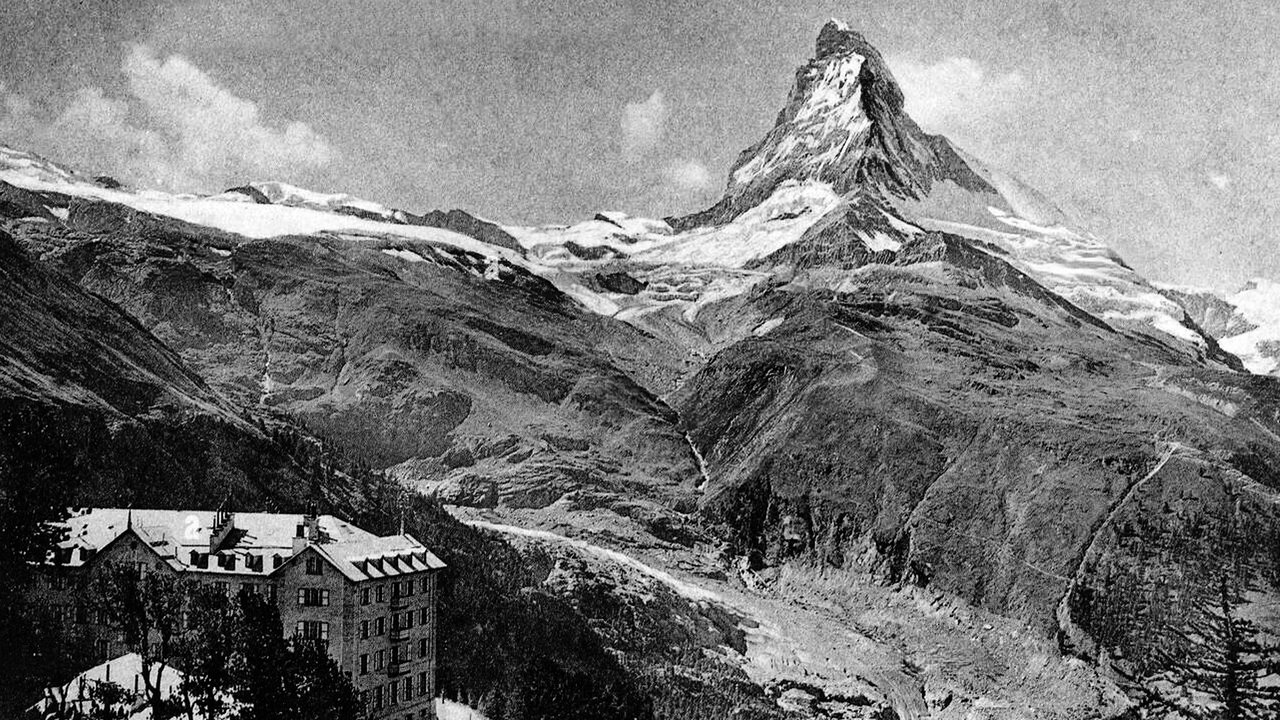
Cervino 1901(1901)
In 1953, in an old cabinet of a former photographer from Zermatt, a first mountaineering film was found. It was a silent film from the first era showing the ascent of the Matterhorn by a group of guides across the Hornli ridge. The film is attributed to the American Frederick Burlingham and dated 1901 and is therefore the first mountaineering film in history. The story of the discovery was also dressed in a certain aura of legend and mystery as it was told that the original copy of the film had been lost forever in a shipwreck in the Atlantic and was the only copy printed that remained. The film was renamed Cervin 1901 or Cervino 1901, and in 2014, after being restored again. But the truth is that this whole story, which has somehow held together throughout this period, is full of inaccuracies...

Movie: Cervino 1901
Top 1 Billed Cast
Self
Video Trailer Cervino 1901
Recommendations Movies
 6.5
6.5Return to Horror Hotel(en)
Return to Horror Hotel is an anthology feature with 4 segments. One is about giant a bedbugs, one is about a magical charm that turns girls beautiful, one is about a WWII sailor who hasn't aged and one is about a terrorizing severed hand.
 5.3
5.3Avatar(ja)
Michiko lost her dad in a car accident when she was 10 years old. After the car accident, Michiko has lived with her mother Kyoko. Michiko, now in her 2nd year of high school, gets a cell phone from her mother as a birthday present. Michiko is so excited to have her very first cell phone. Soon afterwards, she is forced into joining social networking site "AvaQ" by classmate, and queen of the classroom, Taeko.
 6.4
6.4Avatar: Creating the World of Pandora(en)
The Making-of James Cameron's Avatar. It shows interesting parts of the work on the set.
 6.1
6.1The Three Friends(ar)
Three friends are arrested after committing an accident with their car. After finishing their sentence, they become partners with the owner of a decoration workshop. But he deceives them and spends the money in gambling. They force him to sign a waiver of his workshop but he wants to get it back.
 6.9
6.9Digimon Adventure tri. Part 4: Loss(ja)
Upon arriving at the Digital World after the "reboot", the Digidestined are hunted by a new villain. Meanwhile, Sora is troubled by her partner Digimon's indifference towards her.
 6.7
6.7Inside Asda: Bigger, Better, Cheaper?(en)
The supermarket giant that rose high by taking prices low.
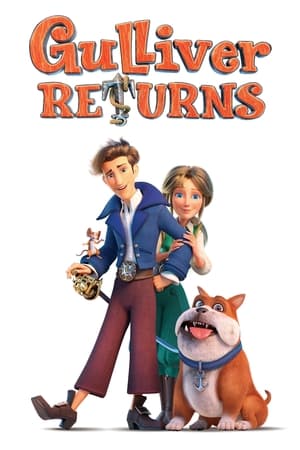 6.1
6.1Gulliver Returns(en)
World traveler and adventurer Gulliver is invited to return to Lilliput, the town he previously saved from the enemy fleet of the neighboring Blefuscu.
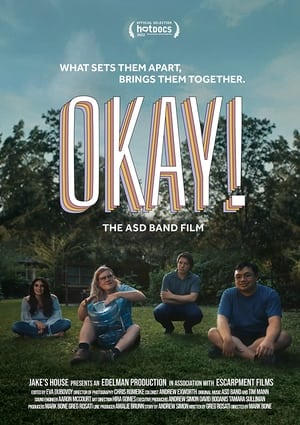 6.1
6.1Okay! (The ASD Band Film)(en)
Meet the four talented, autistic members of the ASD Band: piano prodigy Ron, with an impeccable memory for reciting the correct day of the week for any date in history; lead singer Rawan, who uses makeup to express herself and can hit an impressively high pitch; Spenser, an energetic drummer with an affinity for punk rock music; and guitarist Jackson, who loves all things 1950s. Their love of music brings them together to form one kick-ass garage band. After releasing a number of covers, the band is now embarking upon the challenging journey of writing their first album of original music. With the guidance of Maury, their musical director, the band's garage sessions segue to the recording studio, where for the first time each member shares their own compositions. Will they be able to pull it off and celebrate the launch with their first-ever public show?
 6.0
6.0The Terminal Trust(ja)
Shinzo Egi is an asthma sufferer who does not want to be place on life support. As a last request, Shinzo Egi asks his doctor Ayano Orii if she could follow his wish. Doctor Ayano Orii is then questioned in a criminal case because of her decision.
 6.5
6.5Angelique and the King(fr)
Soon after her latest husband death, the King himself (Louis XIV) meets with our heroine and begs her to help convince the Persian Ambassador to agree to a treaty. However, what they didn't realize was that the handsome Persian was in fact a sexual sadist. So, it is up to the King's half- brother, some Hungarian prince, to save Angélique from the evil troll's clutches.
 5.1
5.1Shark Attack 2(en)
A biological experiment goes bad, this time releasing a gaggle of mutated great white sharks with a taste for human flesh. Soon enough, shark expert Nick West is on the case, leading a crew to study them and eventually bring them back into captivity. West's plans hit a snag, however, when Australian shark hunter Roy Bishop is called in to wipe out the fishy menace.
 6.7
6.7Return of Special Forces 5(zh)
After Long Wei and his men finished their operation in Fuji, they received a distress message from his ex-wife, Leng Yun. Long Wei immediately rushes to Southeast Asia alone to look for his ex-wife. With his excellent ability to fight alone, Long Wei and his daughter break through all the dangers they encounter one by one, will they be able to rescue his ex-wife successfully?
 7.0
7.0RR(en)
Looping, chugging and barreling by, the trains in Benning's latest monumental film map a stunning topography and a history of American development. RR comes three decades after Benning and Bette Gordon made The United States of America (1975), a cinematic journey along the country’s interstates that is keenly aware “of superhighways and railroad tracks as American public symbols.” A political essay responding to the economic histories of trains as instruments in a culture of hyper-consumption, RR articulates its concern most explicitly when Eisenhower's military-industrial complex speech is heard as a mile long coal train passes through eastern Wyoming. Benning spent two and a half years collecting two hundred and sixteen shots of trains, forty-three of which appear in RR. The locomotives' varying colors, speeds, vectors, and reverberations are charged with visual thrills, romance and a nostalgia heightened by Benning's declaration that this will be his last work in 16mm film.
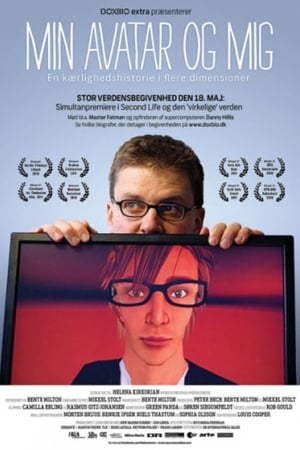 5.3
5.3My Avatar and Me(da)
is a creative documentary-fiction film and a film that might expand your sense of reality. It is the story about a man who enters the virtual world Second Life to pursue his personal dreams and ambitions. His journey into cyberspace becomes a magic learning experience, which gradually opens the gates to a much larger reality.
 6.8
6.8Her Return(pl)
An industrialist's wife announces that she is leaving him, but returns shortly after and tells him that she will only stay with him for appearances. This causes the industrialist to rethink his life choices.
Similar Movies
The Race for Everest(en)
The dramatic story of the British expedition that made the first ascent of Everest. Combining interviews with the surviving members of the 1953 British and 1952 Swiss attempt on Everest with rare archival material, this film tells the story of the race to climb Everest in the early 1950s and its climax in 1953.
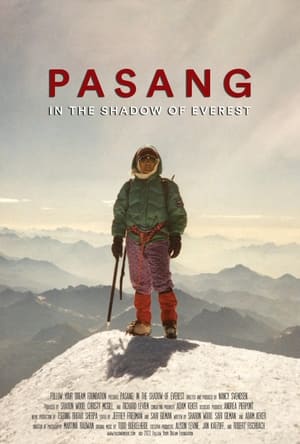 0.0
0.0Pasang: In the Shadow of Everest(en)
Transcending cultural barriers and consistently going against the grain, female Nepali climber Pasang Lhamu Sherpa attempted to summit Everest four times in the early nineties. Although she was not allowed to attend school as a child, Pasang did not let that stop her from pursuing her dreams. After founding her own trekking company in Kathmandu, she blazed a trail for Nepali women via her efforts to summit Everest. Proving how big you can dream and how far you can go to achieve those dreams, she left a legacy not only for the family she has left behind, but for the myriad women following in her footsteps.
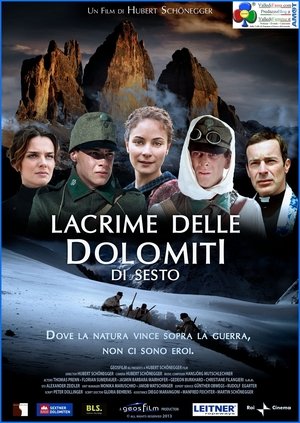 4.6
4.6Tears of the Sexten Dolomites(it)
In 1915, the First World War is in full swing and young men are called to military service in rows - including Franz and Peter. Both are sent to the Dolomite front, in order to fend off a threatened Italian attack. Comradeship and loyalty are needed in the fight, but Franz and Peter are ever enemies. Since Peter's romance with Anna, the competition between the two flares up more. But the circumstances of the war and the harsh weather in the mountains soon end those hostilities.
 7.5
7.5Touching the Void(en)
The true story of Joe Simpson and Simon Yates' disastrous and nearly-fatal mountain climb of 6,344m Siula Grande in the Cordillera Huayhuash in the Peruvian Andes in 1985.
 0.0
0.0Aiming High(de)
It was a dream of superlatives: to establish a new alpine skiing downhill classic at the foot of the Matterhorn. Sponsors, athletes and fans were on hand, but the weather didn't cooperate. A reflection on the relationship between sports, tourism and climate change.
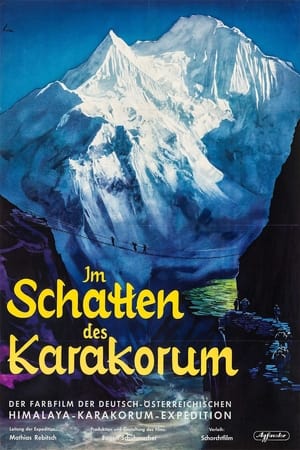 0.0
0.0In the Shadow of Karakorum(de)
In 1954, a German-Austrian expedition led by Mathias Rebitsch set off for the difficult-to-access Karakoram Mountains, geographically north of the Himalayas. They come across the Hunza, a people who live in the valley of the same name and believe they are descended from the soldiers of Alexander the Great. The documentary conveys impressions of the poor life of the Hunza people, the harvest, a court hearing, festivals and the children's everyday school life. Finally, the expedition sets off again and sets up its main camp on the moraine ridge of a glacier, where they measure the glacier and the earth's magnetic field. Finally, some men from the research community set off for a sub-peak of Batura.
 6.2
6.2Stars at Noon(fr)
Les Etoiles de Midi is an engaging docudrama about some of the more spectacular exploits of French mountain climbers over the last several decades. In one re-enacted story, there is a wartime escape through the mountains, and in another, a daring rescue of a pair of climbers who had been missing. The actors themselves are adept at the sport of climbing, and they give the scenes an immediacy and real daring that brings the stories alive. A combination of their acrobatics and skill and the outstanding episodes in the history of French climbing creates a winning 78 minutes.
 0.0
0.0In the Theatre of the Gogs(en)
A contemplation of art and adventure in the southern wilds of New Zealand by both a landscape photographer and an adventure filmmaker. This film is the unexpected result of their two unique perspectives.
 6.8
6.8Blindsight(en)
Six blind Tibetan teenagers climb the Lhakpa-Ri peak of Mount Everest, led by seven-summit blind mountain-climber Erik Weihenmayer.
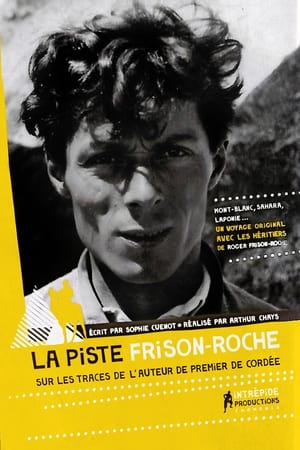 10.0
10.0The Frison-Roche Track(fr)
Roger Frison-Roche born in Paris in 1906 and moved to Chamonix at the age of 17. He was quickly adopted by local mountaineers and became the first guide in the Company not to have been born in the valley. He is also an insatiable explorer, in love with landscapes and peoples, having traveled from the Hoggar to the Sami camps in Lapland. And the author, among others, of the famous adventure novel Premier de Cordée! This documentary, made up of archive images and interviews, exposes the prolific life of a man who communicated his passion for the mountains by all possible means. A young journalist from Chamonix follows in the footsteps of Roger Frison-Roche. She meets people who knew him and others who followed in his footsteps: guides, filmmaker and author Philippe Claudel, a director, his family; on a trip to Lapland, Algeria, Chamonix.
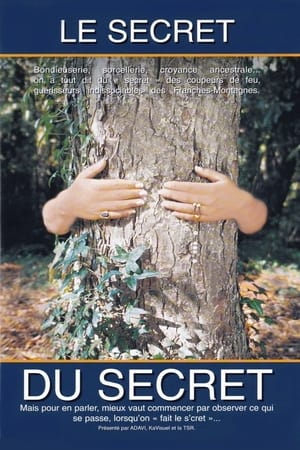 0.0
0.0The Secret of the Secret(en)
The traditional healers in the Swiss and French mountains.
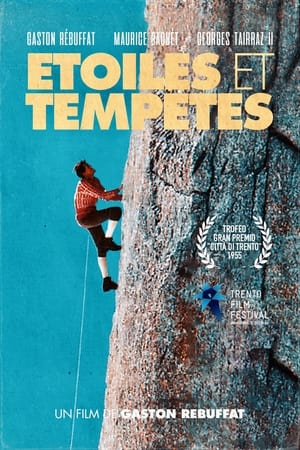 10.0
10.0Stars and Storms(fr)
Gaston Rébuffat is part of the history of mountaineering. Marseillais prodigy, high mountain guide of the Chamonix guide company and famous for the ascent of the most famous north faces: some are 1st rehearsals, others 1st French or 1st as a guide. Filmed by Georges Tairraz, this masterpiece released in 1955 reveals the beauty of effort and the pleasure of sharing in the mountains. Apart from the feat, the mountains are not there to satisfy egocentric ambitions. A classic !
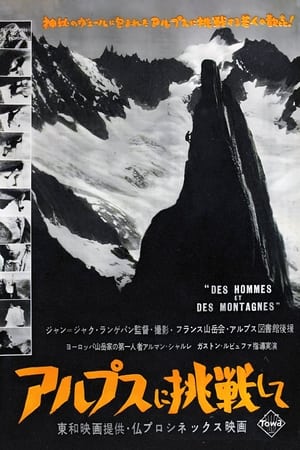 10.0
10.0Des Hommes Et Des Montagnes(fr)
History, advice and demonstrations of mountaineering in the Mont Blanc massif by the renowned guides of the National School of Ski and Mountaineering from Chamonix. The film starts with an historical summary illustrating the aspirations and methods that lead man to conquer the mountains. Armand Charlet teaches mountaineering techniques and takes his students to the field for glacier or rock exercises. Gaston Rebuffat makes demonstrations of particularly dangerous climbs. At altitude, people move in solitude, cold and silence, like circus acrobats without spectators, but nothing stops the modern mountaineer.
 10.0
10.0The Call Of The Peaks(fr)
L'Appel Des Cimes, directed by Alain Pol, is a documentary commissioned by the CAF and the various French ministries on the practice of post-war mountaineering. In 1946, climbers trained at the Fontainebleau Climbing School. Guy Poulet and Jacques Poincenot try to climb the Aiguilles de Chamonix but fail during the climbing phase. After a night in a refuge with Denise Rouzeau and the guide Pierre Allain, the mountaineers make a new attempt. Successful demonstration for those who continued the approach walk then the passage of the seracs of the glacier. On the rock, the roped party crosses a chimney and a crack to reach the summit and abseil down. Led by high mountain scouts, Guy and Jacques rediscover the glaciers and needles of the Mont-Blanc massif during the next lesson.
 10.0
10.0L'Histoire D'un Homme Hors Norme(fr)
Director Damien Roz was twelve years old when he attended a conference by mountaineer Jean-Marie Choffat who told of his passion for the mountains and his fight against cancer. Shocked, the young boy said to himself that one day he would tell the story of this extraordinary man. 29 years ago Jean-Marie Choffat, a seasoned mountaineer, suffered from liver cancer. It was then announced to his parents that he only had a few months left to live. But Jean-Marie, who had just had a son, promised himself that he would see his son grow up until he was at least 20… His son Marcelin is almost thirty today and Jean Marie is still there. Jean-Marie lived through the golden age of mountaineering with some 1,200 ascents around the world and many firsts... If he remembers an ascent of the north face of the Grandes Jorasses between two chemotherapy sessions, he evokes his strong friendships with Yannick Seigneur, René Desmaison or Gaston Rébuffat...
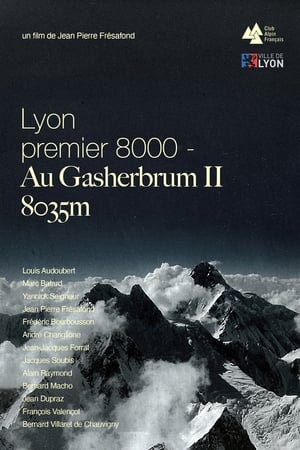 10.0
10.0Lyon Premier 8000, Au Gasherbrum II - 8035m(fr)
The "Lyon Premier 8000-Gasherbrum II 8035m" expedition, organized and led by Jean-Pierre Frésafond in 1975, was sponsored by the Lyon section of the Club Alpin Français and by Louis Pradel, Mayor of Lyon. The film traces the departure from Lyon of Berliet heavy trucks loaded with equipment, daily life in Pakistan, preparation for the expedition and the approach march with the porters, daily life at the base camp and in the camps. altitude of the members of the expedition: L. Audoubert, Marc Batard, F. Bourbousson, A. Chariglione, J. Dupraz, J.J. Forrat, H. and JP. Frésafond, B. Macho, Doctor A. Raymond, Y. Seigneur, J. Soubis, F. Valençot, B. Villaret de Chauvignypuis. Finally On June 18, 1975, Yannick Seigneur and Marc Batard reached the summit by opening a route along the south ridge. Bernard Villaret de Chauvigny, who was killed during the second assault, was the first victim of the Gasherbrum.
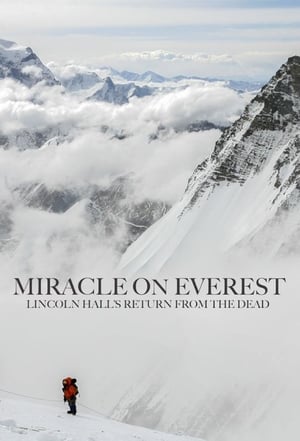 3.9
3.9Miracle on Everest(en)
2006 was one of the deadliest Everest seasons on record. Experienced mountaineer Lincoln Hall was invited to join an expedition as a high altitude cameraman. It was his second attempt to summit the mountain, having turned back just short 22 years earlier. Shortly after reaching the summit, Hall began to behave irrationally, suffering from lack of oxygen. Aided by his loyal Sherpas for over 9 hours, he eventually collapsed and they declared him dead. His family were informed and the news hit headlines. But something happened that night that science cannot explain. The next morning Lincoln Hall was found alive by approaching climbers and his dramatic rescue began. Never before has a man been declared dead so high on Everest and survived. This is the remarkable true story of Lincoln Hall’s extraordinary journey back from beyond.
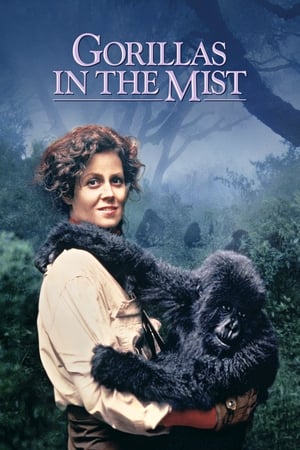 7.0
7.0Gorillas in the Mist(en)
The story of Dian Fossey, a scientist who came to Africa to study the vanishing mountain gorillas, and later fought to protect them.
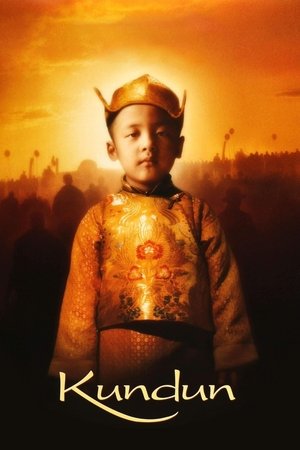 6.8
6.8Kundun(en)
The Tibetans refer to the Dalai Lama as 'Kundun', which means 'The Presence'. He was forced to escape from his native home, Tibet, when communist China invaded and enforced an oppressive regime upon the peaceful nation. The Dalai Lama escaped to India in 1959 and has been living in exile in Dharamsala ever since.





